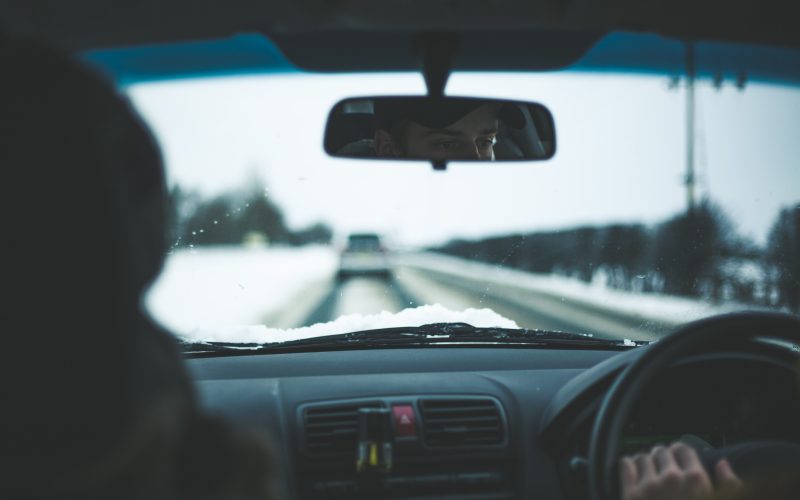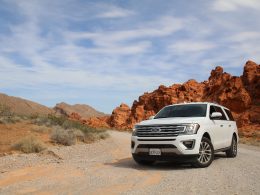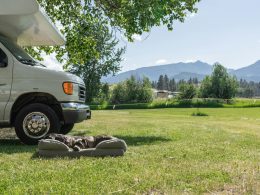Drivers have been warned that stopping distances will be up to 10 times greater during this week’s arctic weather posing a serious threat to all road users.
Motoring experts at LeaseCar.uk have urged motorists to follow six simple steps when driving in icy conditions to reduce the risk of accidents from occurring.
Motorists should be aware that the highway code advises drivers to drive according to the road conditions as tyres will have less traction in icy conditions.

In the ice and snow of winter, motorists can feel like they are in control until they lose grip under braking or acceleration, often taking drivers by surprise.
Stopping distances are worked out by adding the thinking distance and the braking distance, which can vary depending on the road conditions and the condition of the car.
At 50mph the total stopping distance is around 53 metres but in the snow and ice this increases to 395m – the UK’s tallest building The Shard is 310m high.
At 30mph the total stopping distance is around 23 metres in normal conditions but is 149 metres in the snow and ice.
So it could take drivers the height of London’s Walkie-Talkie building to bring their vehicles to a stop driving at the speed limit in the snow and ice on a residential street.
Checking parts of the vehicle such as the condition of the brakes and tyres can help reduce stopping distances while managing the space to the car in front will make sure drivers have room to stop in treacherous conditions.
A spokesperson from LeaseCar.uk said: “It’s important for drivers to be aware that stopping distances can increase 10-fold in the snow and ice.
“As we enter a week of arctic conditions here in the UK, motorists must manage their speed and distance to the car in front to prevent any serious accidents.
“Motorists only need to visualise the height of The Shard or the Walkie-Talkie to understand better the distance they will need to safely stop their vehicle when driving in snow and ice.
“Drivers should regularly check the condition of their vehicle paying particular attention to the brakes and depth of tyre tread as stopping distances will increase significantly in the wet if either are in poor condition.”
Here are the six simple measures drivers should take to reduce the risk of having an accident in the snow and ice as recommended by LeaseCar.uk:
- Monitor tyre tread
Not only do stopping distances dramatically increase when driving on snow and ice, but threadbare tyres will grip the road even less, meaning even greater distances before drivers can safely stop their vehicles. Tyre tread can easily harden in cold weather which can lead to further loss of control.
- Regularly check brake condition
If you’re noticing a delay in the car slowing after pressing the brake pedal there’s a high chance that the car has worn brake pads or the brakes have developed a fault. When driving on snow and ice it’s crucial that the brakes work as they should otherwise already large stopping distances increase further.
- Manage the distance to the car in front
One good guide to follow is the two-second rule in the dry which involves picking a stationary object by the side of the road and counting the seconds between the car in front passing the object and you passing it. In the dry two seconds is the minimum time recommended. In the snow and ice, you need to imagine up to 20 seconds at 50 mph. If you are within 20 seconds in the snow and ice at that speed, then give yourself more space to brake safely.
- Cautious driving
Icy conditions means less grip on the road. Driving at slower speeds and braking in a controlled way will help keep the car balanced in the snow and you in control. It’s also best to not press too hard on the accelerator to prevent the likelihood of the car skidding and the wheels from spinning on the icy tarmac.
- Check headlights are working
One of the most important checks to make is ensuring the headlights are in full working order. During the darker months having faulty lights can make it more difficult to calculate a safe stopping distance to the car in front.
- Take regular breaks
Driving in the winter months requires greater levels of concentration and can be more draining as we are often driving in the dark in hazardous conditions. It’s important to regularly rest at services to keep energised while driving as tiredness can increase the chances of an accident due to delayed reaction times.









